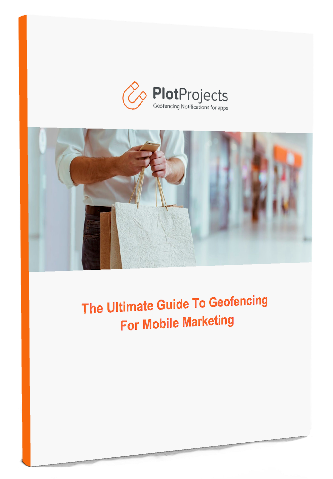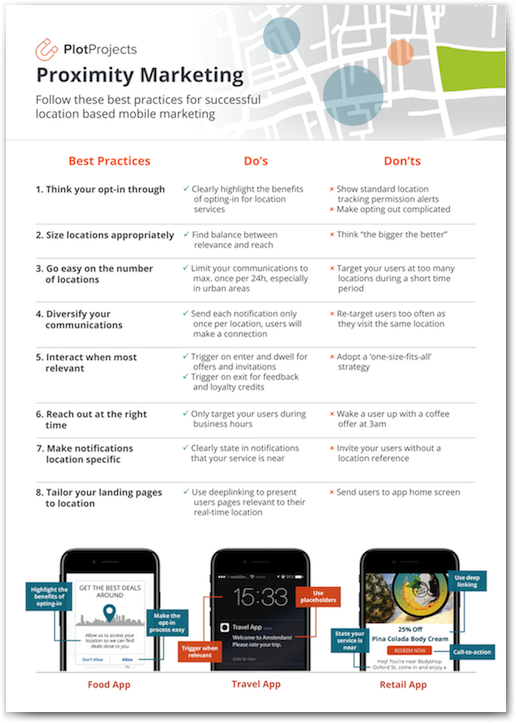There are a lot of speculations going around geofencing – it’s capabilities and limitations, for example whether it drains the phone battery and so forth. We’ve decided to shed some light on this matter and once and for all put a stop to all of the confusions. So read on to find out what are the 7 common geofencing myths.
Myth #1: The App Needs To Be On For Geofencing To Work
Very often we run into a commonly shared belief that geofencing can only work (that is – be active) if the app is running either in the background or foreground. While it might be true for some applications and SDK’s, that is not a true by default.
With Plot Projects’ geofencing plugin, the app only needs to be downloaded by the users. The users however, need to say yes (opt-in) when asked if they would like to receive push notifications from your app and if they would like your app to use their location. Find out how to convince your app users to share their location details in our blog post about The Perfect Opt-In Experience.
Myth #2: Geofencing Drains The Mobile Phone Battery
Some geofencing providers use GPS for geofencing, which does have the effect of draining smartphone batteries faster. At Plot Projects, because we use cellular and Wi-Fi technology, this is not the case.
The Plot Projects technology has been further optimised so that battery consumption and data storage are even more efficient. Plot Projects only stores the most relevant and closest geofences and beacons to mobile device and as the devices move around, the software automatically updates to the most relevant set of geofences.
Myth #3: Geofencing Technology Isn’t Accurate
The accuracy of location data has a big stigma in the world of mobile. What is true is that the location data available in the mobile ecosystem is of varying quality – some geo-suppliers provide questionable location data and some – pretty accurate.
Some geo-suppliers tend to have low location accuracy at certain times such as when users switch Wifis or are in the subway. Users might then receive notifications out of the preferred range.
Plot Projects carries out a location re-check before sending a notification to make sure users always receive messages in the right place at the right time. The accuracy of Plot Projects’ geofencing technology has been tested and proven to be able to locate devices down to within 10m.
Myth #4: Geofencing Has A Low ROI
Studies show that the opposite is true, as the CTR (Click Through Rate) for location based push notifications is about 10-20% for retail coupons and restaurants. The CTR for generic push notifications which is just 2% and for mobile banners is 0.01-1%. Other mediums such as advertising on billboards or TV are more expensive and harder to quantify. Attributing ROI to any medium is difficult, but CTR is a good measure for this.
 |
Get the Rest of the Geofencing MythsFor the final 3 geofencing myths, download the Ultimate Guide to Geofencing for Mobile Marketing. Along with that, you will get a simple explanation of how beacons & geofencing work, tips and handy examples on how to use them. |



